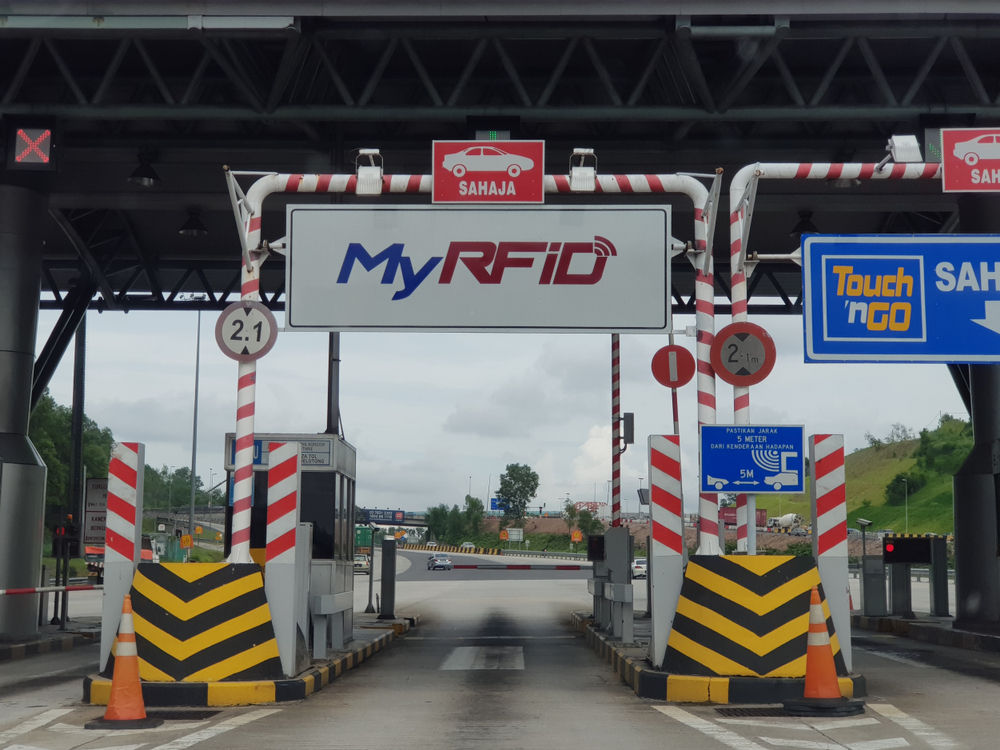RFID stands for radio-frequency identification and basically entails a form of wireless communication that incorporates the use of electromagnetic or electrostatic linking in radio frequency to uniquely identify an object, animal or person.
But we won’t get into the technicality and confuse people here. As far as we understand, RFID is a type of technology that makes it more convenient for us to live our day-to-day lives, and that’s enough for us.
In this article, we are going to explore six things that you need to know about RFID!
1. How does RFID work?
RFID works by implementing an RFID tag to allow users to automatically and securely identify and track inventory and assets.
An RFID reader reads the RFID tag and gives access. RFID utilises auto-ID technology by giving access to these tags to be read without line of sight and potentially between a range of a few centimeters to over 20+ meters.
2. Efficient RFID Toll Application
 As RFID begins to develop, it has become a more cost-effective and efficient system. For example, we can also see that RFID is becoming more prevalent among tolls.
As RFID begins to develop, it has become a more cost-effective and efficient system. For example, we can also see that RFID is becoming more prevalent among tolls.
For tolls, usually it works by having the RFID scanner scan the RFID tag embedded on the car when passing through tolls, making way for a more efficient journey on the highway.
3. Inventory Tracking
 By utilising an RFID reader or an RFID scanner, factories and warehouses can better manage their stacks of inventory. Optimising these scanners also allows for a more cost-efficient service. Using RFID for inventory tracking offers several benefits such as reduced labor costs.
By utilising an RFID reader or an RFID scanner, factories and warehouses can better manage their stacks of inventory. Optimising these scanners also allows for a more cost-efficient service. Using RFID for inventory tracking offers several benefits such as reduced labor costs.
Implementing an RFID inventory system may cost a lot at first, but will be more cost-effective and convenient in the future. Aside from warehouses and factories, retail outlets can benefit from this feature as well.
4. Efficient Online Transactions
 Picture this: it’s Saturday morning and you’re about to go for your usual grocery run at your local supermarket. You pick up the items that you want, buy them and walk out almost instantaneously. A scenario like this is possible with the applications of RFID.
Picture this: it’s Saturday morning and you’re about to go for your usual grocery run at your local supermarket. You pick up the items that you want, buy them and walk out almost instantaneously. A scenario like this is possible with the applications of RFID.
For example, the RFID tags in supermarkets can be linked to a third-party application or your online banking app of choice to directly link to the contents of the supermarket, making for an easy and streamlined transaction.
5. Elevated Security Systems
 As RFID enables a more concrete identification of who, where and what enters a room, organisations and individuals will be able to make use of these features for added security. RFID could potentially be implemented into a keycard of sorts, making it an RFID card.
As RFID enables a more concrete identification of who, where and what enters a room, organisations and individuals will be able to make use of these features for added security. RFID could potentially be implemented into a keycard of sorts, making it an RFID card.
For example, only the people who have embedded their ID’s into the RFID card will be able to move about the premises of the apartment, as to withhold and limit entry in the event of theft. Just tap and go!
6. Keeping Track of Pets & Livestock

Like warehouses and factories, farmers and veterinarians can use RFID tags to keep track and identify the animals in their care. They can also update if they come across any new information about the animals, which could include its origin, pedigree and medical details.
RFID is an ever-developing technology and we’re always up for chasing after new technologies. Be it the RFID reader, card OR scanner. Come join us as we uncover and break down technology in all of it’s forms.
[hubspot type=form portal=5699703 id=c063034a-f66d-41ab-881b-6e6a3f275c33]
